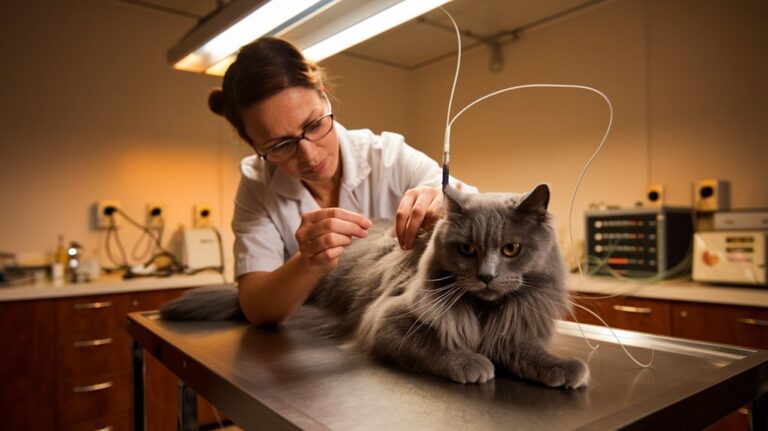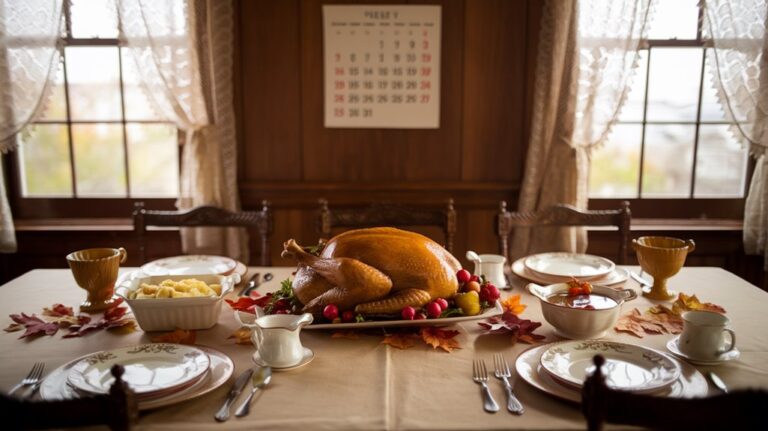The Polio Vaccine Inspired “A Spoonful of Sugar
You might think the cheerful melody of "A Spoonful of Sugar" simply emerged from Disney's magical creative process, but its origins actually trace back to a pivotal moment in medical history. When young Jeffrey Sherman told his father about receiving the polio vaccine on a sugar cube, he unknowingly sparked the inspiration for one of cinema's most beloved songs. This surprising connection between public health and entertainment reveals how real-life innovations can transform into timeless cultural touchstones.
The Birth of a Medical Marvel: Early Polio Vaccine Development

While early attempts to develop a polio vaccine in the 1930s ended in tragedy, these initial failures paved the way for future breakthroughs.
You might be surprised to learn that scientists like Kolmer and Brodie faced significant vaccine challenges when they conducted early trials. Kolmer's controversial method of grinding infected monkey spinal cords proved dangerous, while Brodie's tests on over 9,000 children suffered from poor protocol design.
Everything changed in 1948 when Enders, Weller, and Robbins successfully cultivated the poliovirus in human tissue, earning them the 1954 Nobel Prize. Subsequent studies showed that the vaccine was safe with minimal reactions in children who received it.
Their work revealed three essential poliovirus serotypes and proved that antibodies in gamma globulin could protect against paralytic polio. These discoveries laid the foundation for Jonas Salk's groundbreaking vaccine development in the early 1950s. The resulting IPV vaccine demonstrated remarkable effectiveness, with 99% immunity achieved after three doses.
From Sugar Cube to Silver Screen: Origins of a Disney Classic
The race to combat polio produced an unexpected cultural gem that would captivate audiences for generations.
When Jeffrey Sherman received his polio vaccine on a sugar cube at school in the early 1960s, he'd unknowingly spark creative inspiration for one of Disney's most iconic songs.
After sharing his experience with his father Robert Sherman, the idea quickly transformed into "A Spoonful of Sugar."
The song eventually replaced "The Eyes of Love", which Andrews had found unsuitable for the role.
The timing couldn't have been better – Julie Andrews had just rejected another song for Mary Poppins, and Walt Disney needed something new.
Working with his brother Richard, Robert crafted a tune that perfectly captured Mary Poppins' philosophy of making difficult tasks enjoyable.
Bette Davis and Lansbury had been considered for the role before Andrews was ultimately cast.
The song's connection to the polio vaccine created a unique bridge between medical innovation and entertainment, becoming a beloved classic that continues to resonate with audiences today.
The Sherman Brothers' Creative Journey
From humble beginnings as songwriters challenged by their father in 1951, Robert and Richard Sherman would become Disney's most influential musical duo. Their songwriting process reflected a unique blend of storytelling and musicality, seamlessly integrating songs into narratives as natural extensions of dialogue. The brothers were sons of immigrants who brought their diverse cultural heritage into their compositions.
You'll find their family collaboration runs deep, with musical roots spanning four generations – from their great-grandfather Otto's clarinet to their father Al's Tin Pan Alley compositions.
Despite not being close personally, they mastered the art of professional partnership, creating over 200 songs for Disney films and theme parks. Their creative approach centered on finding pivotal story moments that could carry the narrative through music. They eventually composed music for 27 films and 24 shows throughout their career.
Walt Disney recognized this talent when he first heard "The Strummin' Song" in 1961, leading to their legendary career at Disney Studios.
Public Health Impact and Global Eradication Efforts
Since launching the Global Polio Eradication Initiative (GPEI), international efforts have prevented an estimated 20 million cases of paralysis in children and reduced global polio cases by more than 99%.
Today, you'll find wild poliovirus transmission only in Afghanistan and Pakistan, though outbreaks still occur in areas with low immunization rates.
Two main vaccination strategies drive polio eradication: the oral poliovirus vaccine (OPV) and inactivated poliovirus vaccine (IPV).
While the U.S. exclusively uses IPV, OPV remains essential in regions with limited access to clean water and sanitation. Brazil has experienced declining vaccination coverage since 2012, with rates dropping from over 95% to around 61% by 2021.
The GPEI's 2022-2026 strategy focuses on strengthening routine immunization, improving surveillance, and enhancing outbreak response. The introduction of a novel oral vaccine offers greater genetic stability in preventing polio transmission.
Through partnerships with organizations like the Gates Foundation, Rotary International, and UNICEF, you'll see continued progress toward complete polio eradication worldwide.
Cultural Legacy of Medical Innovation in Entertainment

Medical breakthroughs often find their way into popular culture, where entertainment media plays an essential role in shaping public understanding and appreciation. You'll find cultural narratives about medical innovations, like the polio vaccine, woven into films, documentaries, and educational programs that make complex scientific concepts more accessible. Much like EASL's school projects, these initiatives focus on engaging young people through creative approaches to health education. The absence of visible disabilities today makes these cultural representations even more crucial for understanding the historical impact of diseases like polio.
Media representation helps bridge the gap between healthcare professionals and the public, fostering a more informed discourse about public health initiatives.
- Feel inspired by the courage of polio survivors sharing their stories through documentaries
- Experience the triumph of scientific achievement through compelling film narratives
- Connect with the human side of medical breakthroughs through personal stories
- Discover how past innovations continue to influence today's healthcare decisions
These cultural touchstones don't just entertain – they help maintain historical memory and counter misinformation while promoting ongoing vaccination efforts.
Transforming Public Health Through Song and Science
While scientific innovation drove the development of polio vaccines, creative public health campaigns transformed how we deliver life-saving medicine to children worldwide.
You'll find that song influence played an essential role in making vaccination campaigns more approachable and memorable, particularly during the historic Sabin Oral Sundays of 1962. The three sugar cube format made it easier than ever for children to receive their doses. The ongoing fight against polio has reduced cases by 99 percent since the late 1980s.
Health messaging evolved from purely clinical approaches to engaging, community-driven efforts. You can see this transformation in how public awareness campaigns now combine educational content with cultural elements that resonate with local communities.











